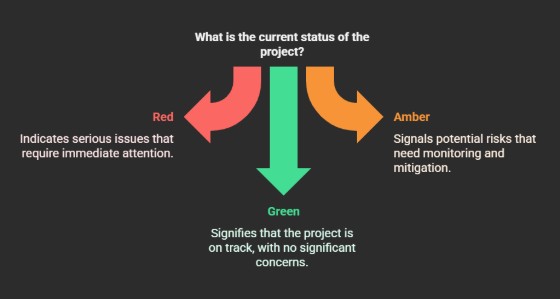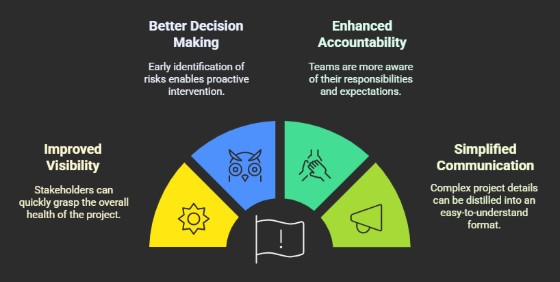How can engineering projects be assessed on the RAG scale?
Status
answered
Status
answered
When it comes to engineering projects, it is crucial to have an eye on progress, risk, and performance. No technique may be so valuable for commentating and reviewing the well-being of a project as the RAG scale. This effective and efficient system provides a clear graphic signal of the project’s status and is simple for stakeholders to make reasonable decisions.
RAG stands for three colors: red, amber, and green. The RAG scale is a widely used assessment method that assigns a color-coded status to different aspects of a project.

For engineering projects, where deadlines, budgets, and technical problems are often hard to manage, the RAG rating system allows problem issues to be identified quickly and ensures that remedial action can be taken ahead of time.
RAG analysis provides a structured approach to assessing various project components. To implement it effectively, project managers should consider key parameters such as scope, budget, timeline, risk management, and resource allocation. Here’s how each factor can be evaluated using the RAG scale:
You might be interested in learning about engineering allocation.
Effective RAG reporting ensures that all stakeholders understand the status of a project at a glance. Regular RAG reports help track trends, identify problem areas, and prioritize action plans.
To make RAG reporting more effective, project managers should:

Learn more about engineering productivity.
While the RAG system is highly effective, it is not without challenges. Some common issues include:
Monitoring engineering project RAG status is a proven technique of tracking progress, managing risk, and being held accountable. With the proper application of RAG analysis, engineering teams can maintain their projects in a controlled state, address issues ahead of time, and achieve successful outcomes.
Whether through routine RAG reporting or clearly defined assessment criteria, organizations that incorporate this technique into their project management system will be better placed to handle the complexities of engineering projects with confidence and clarity.
